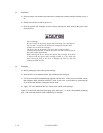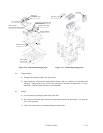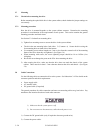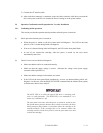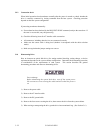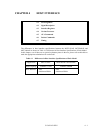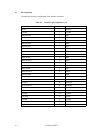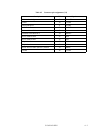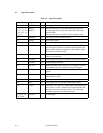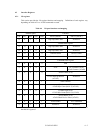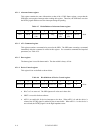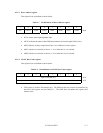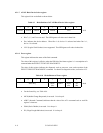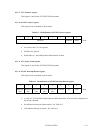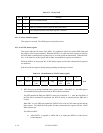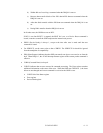
4 - 4 C156-E142-02EN
4.2 Signal Description
Table 4.3 Signal description
PIN Signal name I/O Description
1 RESET- I Reset signal
3, 5, 7, 9, 11,
13, 15, 17, 18,
16, 14, 12, 10,
8, 6, 4
DD7-0
DD15-8
I/O The low-order bus is a 8-bit bidirectional bus signal for
exchanging the status, data, and control data between the
host and ODD.
The high-order bus is used for 16-bit data transfers only.
21 DMARQ O Data request signal for DMA transfer
23 DIOW- I Write strobe signal.
25 DIOR- I Read strobe signal
27 IORDY O This is the ready signal for the host computer. The ODD
uses this signal to request an extension of the transfer cycle
when it cannot prepare a response to a data transfer request
from the host computer in time.
28 CSEL I Sets the ODD to the master (device 0) or slave (device 1).
Effective by jumpering.
29 DMACK- I Answer signal in response to DMARQ during DMA transfer
31 INTRQ O Interrupt signal to the host
32 IOCS16- O Indicates that the ODD is ready for 16-bit transfer when the
host addresses the 16-bit data port during PIO transfer.
36, 33, 35 DA2, 1, 0 O Address signal used by the host to address the ODD task file
register
34 PDIAG- I/O Used by the slave (device 1) to notify the master (device 0)
that diagnostics ended
37 CS0- O Select signal used to select the command block register
38 SC1- O Select signal used to select the control block register
39 DASP- I/O When reset, slave (device 1) output signal indicating that the
slave (device 1) exists. Otherwise, the signal indicates that
the master (device 0) and slave (device 1) is performing
mechanical operation or a failure occurred.
2, 19, 22, 24,
26, 30, 40
Ground - Ground signal



